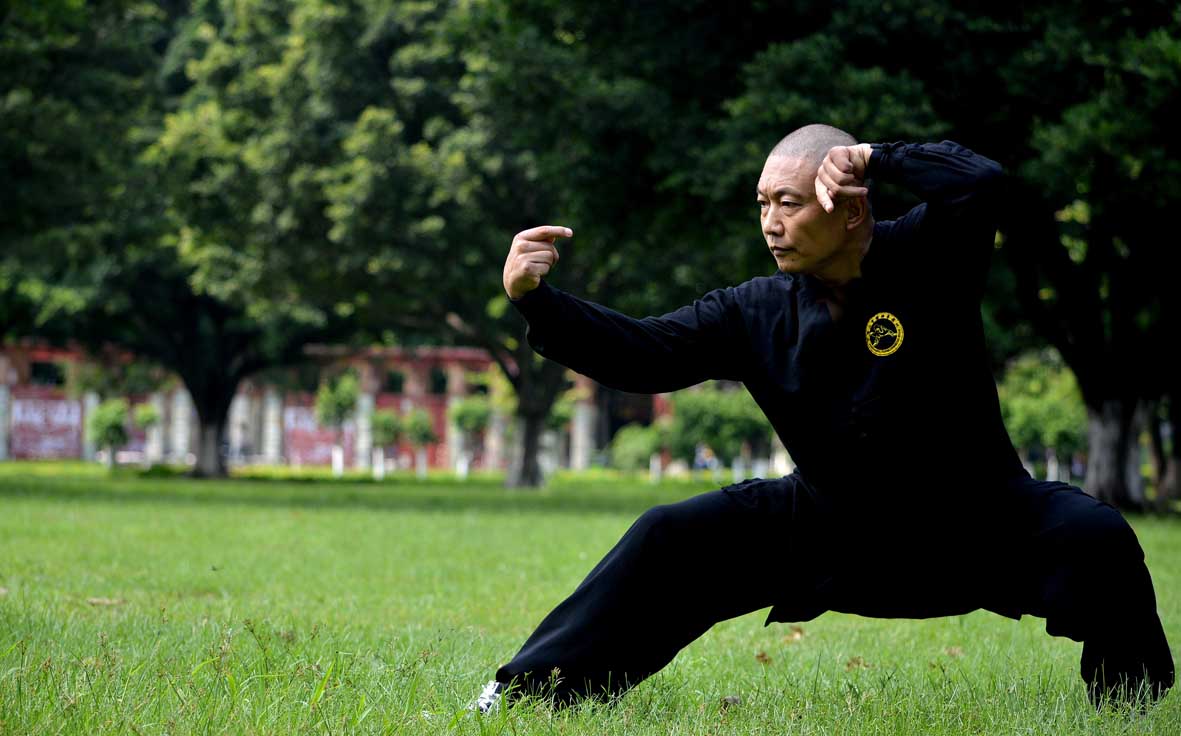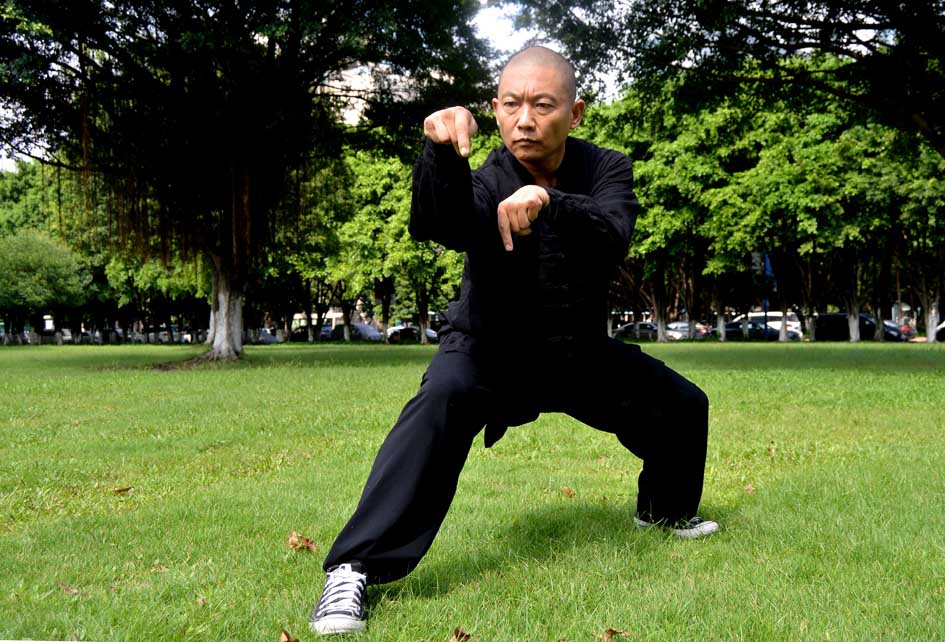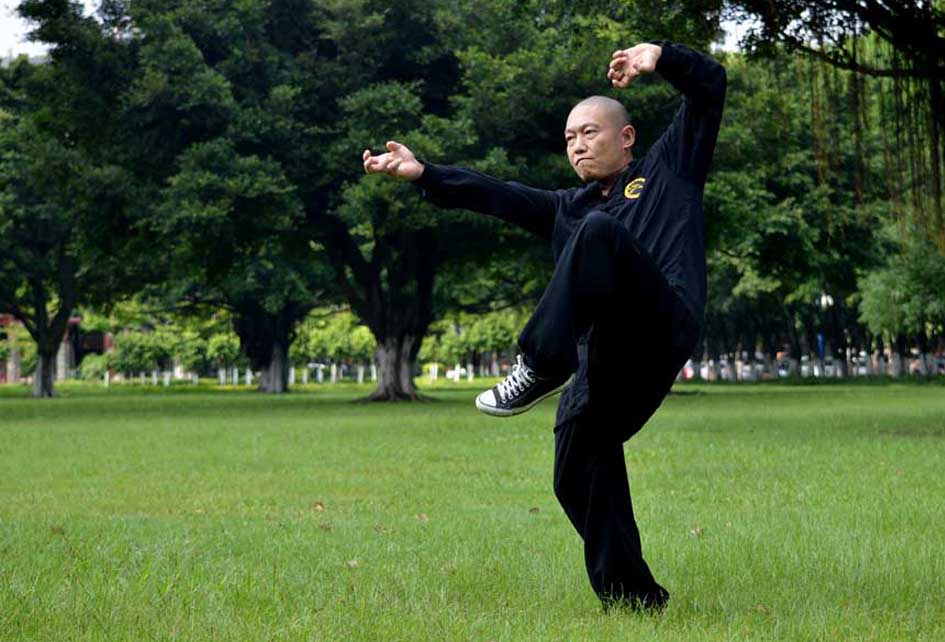It is said that, at the time of the Northern Sòng dynasty 北宋 (960-1127), lived a famous fighter called Wáng Láng 王郎, that some sources relate to the Shàolín monastery 少林寺. Wáng Láng was always defeated by his fellow monks in the temple. One day, when he was going to visit his family in his hometown, he stopped to observe the struggle between a praying mantis and a cicada, in which the mantis was victorious. The way the mantis moved inspired Wáng Láng and, based on studying his movements carefully, developed a new style, after which he managed to defeat the rest of the monks*.

The mantis is a predatory insect of agile, fast and aggressive movements. It has six legs; the two forelegs are long and serrated, acting as arms specially adapted to seize and destroy their prey; the remaining four legs fulfil the exclusive function of holding and displacing the animal. It is said that, at first, Wáng Láng was frustrated by not being able to mimic the speed of movement of the mantis, who was moving on four legs instead of two. However he was able to solve this problem by combining the hand movements of the mantis with the footwork of Hóu Quán 猴拳, the Ape Style, giving rise to the so-called Táng Láng Quán 螳螂拳, or Praying Mantus Boxing**, also called Shāndōng 山东 Mantis Boxing, for having originated there.
This style proved very effective in combat and was transmitted until it became one of the most widely practiced in China. After several centuries of evolution through different lineages, Táng Láng Quán is divided today into different branches; some of the most important are: Qīxīng 七星 or Seven Stars, Méihuā 梅花 or Plum Blossom, Bābù 八步 Eight Steps, Liùhé 六合 Six Harmonies, and Bìmén 闭门 Secret Door.

Master Liú Shì Qīng 刘世清 using Táng Láng Quán 螳螂拳 mantis hands
Bridging the gaps between the different branches, the Táng Láng Quán is characterized by its fast and aggressive movements that aim at different weak points of the body, especially the eyes. Apart from the classic stances common to all Kung Fu styles, we have the so-called Seven Stars stance, or Qī Xīng Bù 七星步, in which the weight of the body falls on the rear leg, semiflexed, and the front leg is stretched supporting the heel and rising the tip of the foot towards the central axis of the body. This position is used to capture the opponent's front leg to bring him down with the combined technique of waist and arms. This position exists also in other styles but in the Táng Láng Quán is much more commonly used.
Although the most characteristic technique is certainly the Táng Láng Gōu 螳螂勾, or mantis strike. This technique uses a hands gesture in which the ring and pinky fingers are closed, and the index, middle and thumb fingers are extended forming a sort of pincer (see photo above). This technique is used primarily for gripping, but it can also attack the body's vital points by nailing the fingertips, or hitting with the wrist.
In Fóshān 佛山 we had the chance to meet Francisco Xavier, a practitioner of Táng Láng Quán of the Qīxīng 七星 and Tài Jí Méi Huā 太极梅花 branches in Chángchūn 長春, which led us to visit Master Liú Shì Qīng's 刘世清 Fóshān Shì Táng Láng Quán Guǎn 佛山市螳螂拳馆 school, where the Táng Láng Quán of the Qīxīng branch is taught. Master Liú opened the doors of his school to us and treated us with unprecedented kindness, sharing with us some of the style techniques without any suspicion. There, we spent a great afternoon conversing and training with him, sharing knowledge and witnessing some form demonstrations that both Sifu Liú and his students performed for us.
We want to express our gratitude to Francisco Xavier, for providing information for the article and for introducing us to Master Liú, as well as to the latter for providing the photographs and, of course, for his kindness and trust.


Master Liú Shì Qīng 刘世清
Notes:
* It is not clear that Wáng Láng was actually a monk of the Shàolín Order; some sources disagree on this point. Nor is there agreement on the time when he lived.
** This style is not related to Southern Mantis Boxing, or Nán Pài Táng Láng 南派螳螂.
